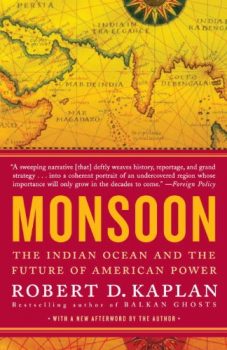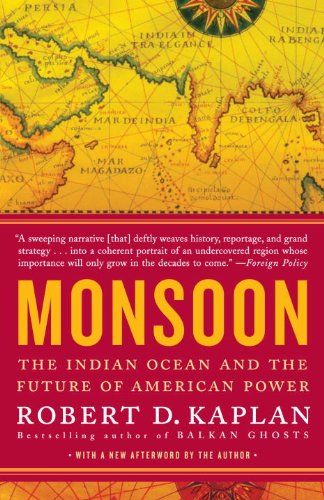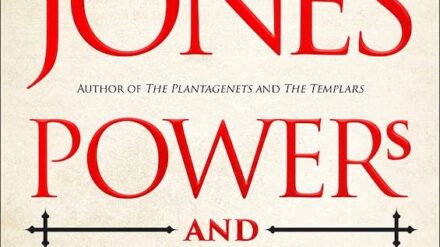
Late in Barack Obama’s first term in the White House, his administration began to execute a foreign policy strategy known as the “pivot to Asia.”
The new policy was tacitly grounded in the realization that the US wars in Iraq and Afghanistan, and the long-standing primacy of the Atlantic Alliance, had distracted the country from the new emerging world order. No longer could the United States reflexively command respect as the world’s sole superpower.
The planet’s center of gravity was inexorably moving toward Asia, with the emergence of China, and secondarily of India, as regional powers—both of them candidates for future superpower status. And that is the reality the geopolitical theorist Robert D. Kaplan explores in his thought-provoking 2010 book, Monsoon, which anticipated Obama’s “pivot” by two years.
Monsoon: The Indian Ocean and the Future of American Power by Robert D. Kaplan (2010) 366 pages ★★★★☆
South Asia holds the key to the planet’s future
The themes that predominate in Monsoon, as in much of Kaplan’s other work, are the profound impact of geography, the enduring importance of history, and realpolitik. It’s unsurprising that he would be so popular in the defense establishment, which shares these preoccupations. In his view, Asia, and most particularly South Asia, holds the key to the future big-power alignments of the twenty-first century. That future, he believes, will play itself out along the shores of the Indian Ocean, which stretches from East Africa, the Middle East, and the Indian subcontinent to Southeast Asia and the Indonesian archipelago. It’s a future in which naval forces will be dominant.
The success of the “pivot to Asia” will play out on the Indian Ocean
Strategically, Kaplan sees the central question is whether China will truly succeed in building a two-ocean navy to match that of the United States. Writing before the pivot to Asia, he lacked confidence that the US Navy would command the resources to maintain its hegemony in the Indian Ocean as well as the western Pacific. (At the time, the Navy possessed fewer than 300 capital ships; currently, however, that number has grown to more than 490.) But he sees competition coming not just from China. India, too, is a naval power, and as its economy continues its rapid growth, Kaplan foresees its navy becoming formidable, also.
An excellent guide to the geopolitics of the 21st century
In Monsoon, Kaplan blends accounts of his extended travels throughout the littoral of the Indian Ocean with historical and geographic commentary, interviews with soldiers, political leaders, and activists, and fine-tuned geopolitical analysis. Along the way, he portrays some of the individuals, past and present, who have most deeply influenced the shape of the Indian Ocean world today. His portraits of the Sultan of Oman, the British imperialists Robert Clive and George Curzon, and now-Indian Prime Minister Narendra Modi before he attained national office, are especially revealing.
To understand the pivot to Asia, and grasp the stakes of the new grand game being played out in the waters of the Indian Ocean, Monsoon is an excellent guide.
About the author
Over the years, Robert D. Kaplan (1952-) has moved steadily in and out of the defense establishment. As a thinker, he has lately been most closely identified with the think tank the Center for a New American Security and the Defense Policy Board, a federal advisory committee to the Pentagon. He is, however, primarily a writer. His nineteen books to date encompass foreign affairs and travel, often between the same covers. His work has also frequently appeared in the nation’s leading newspapers and magazines.
For further reading
Previously I’ve reviewed Robert D. Kaplan’s The Revenge of Geography: What the Map Tells Us About Coming Conflicts and the Battle Against Fate. My review is at Geopolitical analysis illuminates history and world politics. I’ve also reviewed his book, Asia’s Cauldron: The South China Sea and the End of a Stable Pacific, at US-China competition through the lens of geopolitics. You might also be interested in Prisoners of Geography: Ten Maps That Explain Everything About the World by Tim Marshall (A thought-provoking look at how geography explains history).
If you’re interested in exploring further, check out:
- 5 top nonfiction books about national security reviewed here
- Top 20 popular books for understanding American history
- 18 insightful books about China reviewed on this site
- 20 good books about India, past and present
And you can always find my most popular reviews, and the most recent ones, plus a guide to this whole site, on the Home Page.


























